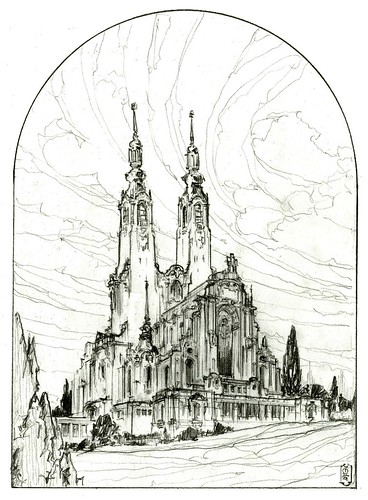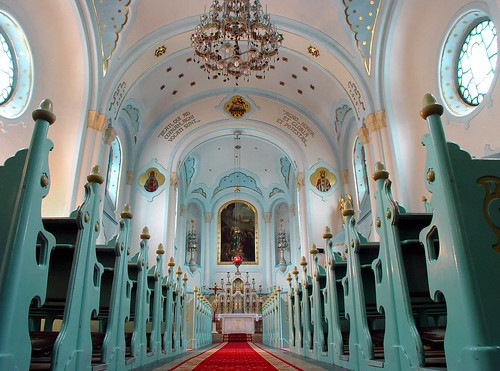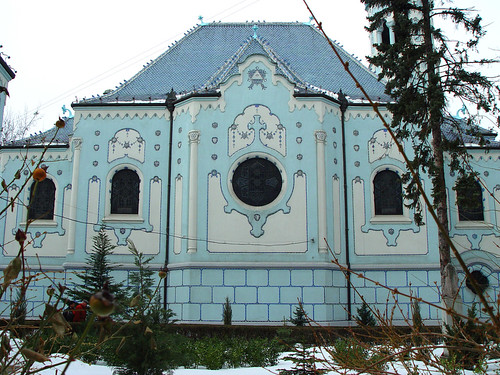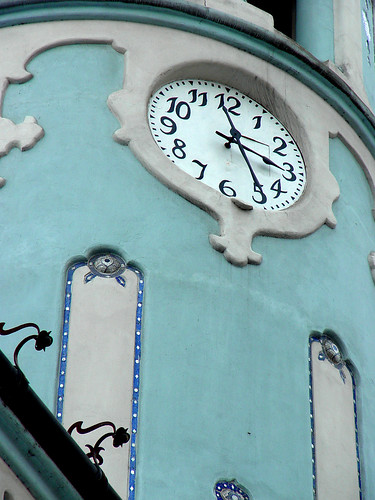Thursday, July 30
Our Lady's Tears

I was recently commissioned, intriguingly, to do a logo for a new Catholic independent film company, Our Lady's Tears, started up by a friend and client who had previously commissioned one of my favorite pieces of art, my image of St. Agnes. Our Lady's Tears is "a Catholic film production company formed in April of 2009, and fuelled by the passion to reveal the richness of the Roman Catholic faith, its traditions and mystical life," and is currently showcasing a couple of trailers for their new film on the life of the shepherdess St. Germaine. They hope to help fund the full-length film in part through selling rosaries and CDs, so have a look round and help out!
The logo, incidentally, we hope to make the end of a short animated sequence showing Our Lady on the flight into Egypt. The design links the pain of her exile with the Christ Child with the sorrows of the Stabat Mater, represented by the quoted text from a medieval version of the sequence, with authentic medieval abbreviation marks supplied by the foremost expert on the subject in my generation. There was some talk of including, in the background, an idol falling off its pillar, a shorthand representation of a legendary event associated with Christ's sojourn in Egypt, but it did not lend itself to the strong, simplified composition demanded by a logo.
Tuesday, July 28
The Blue Church: St. Elizabeth's, Bratislava
Monday, July 27
Catholic Eye Candy from the Institute
(Dead silence.)
Well, I do, anyway.
Things that Make You Go, "Huh?"
Wednesday, July 22
Our Mother the Church

From the Barberini Rxultet roll, Apostolic Library, Vatican
Some of our readers were surprised (pleasantly so, if the comments are any indication) by my depiction below of the Church as a woman, catching the blood of the crucified Christ in a chalice. Reader Sandra Miesel (who has forgotten more than I will ever learn) pointed out it is a common bit of early medieval iconography, and it pops up in other variant forms elsewhere. (For one thing, the Woman Clothed with the Sun in the Apocalypse doubles as the Church as well as the Virgin Mary). One occasional trope actually shows the Church issuing forth from Christ's side on the cross, like Eve did from Adam's rib, an interesting intersection (and in some cases, inversion) of natural birth, rebirth, femininity and masculinity, and the Old and New Covenants.
A few examples follow below:

John Singer Sargent's allegorical image of the Church as part of his (at times controversial) fresco cycle for the Public Library in Boston, one of my favorite painting sequences.


Note the figure of the Church in the lower right-hand corner
Related to this are various allegorical personifications of the Papacy specifically, or of Faith in general.

Moretto da Brescia, Allegory of Faith, 1540.

Vermeer's own Allegory of Faith, one of his less characteristic works, though perfectly iconographically comprehensible.

Personifications of the Church (or Faith, or the Papacy) and the Holy Roman Empire (or possibly the House of Austria) in an initial letter of one of the July volume of the Acta Sanctorum, 1727.
I also recall a very fine figure of the Church Militant in full mail on the tomb of Leo XIII but can find no photos currently.
From the Shrine Archives: Cleanliness is Next to Something-or-Other
--Corrado Pallenberg, Inside the Vatican, 1960
Tuesday, July 21
Matthew Alderman in Latest Dappled Things
Anyway, have a look at it, and a look round Dappled Things--there's a lot of fun stuff in the current edition, including a teaser for a longer article on the vocation of the Christian artist, and an interview with Carlos Eire, the thoughtful, funny academic and author of the equally thoughtful and funny Waiting for Snow in Havana: Confessions of A Cuban Boy, a favorite recent read of mine. (For one thing, Prof. Eire is the only man I know of to have proved the existence of God using eggplants (or was it melons?), sharks in a swimming pool, and a fondness for green lizards.
Monday, July 20
Line Art by Matthew Alderman
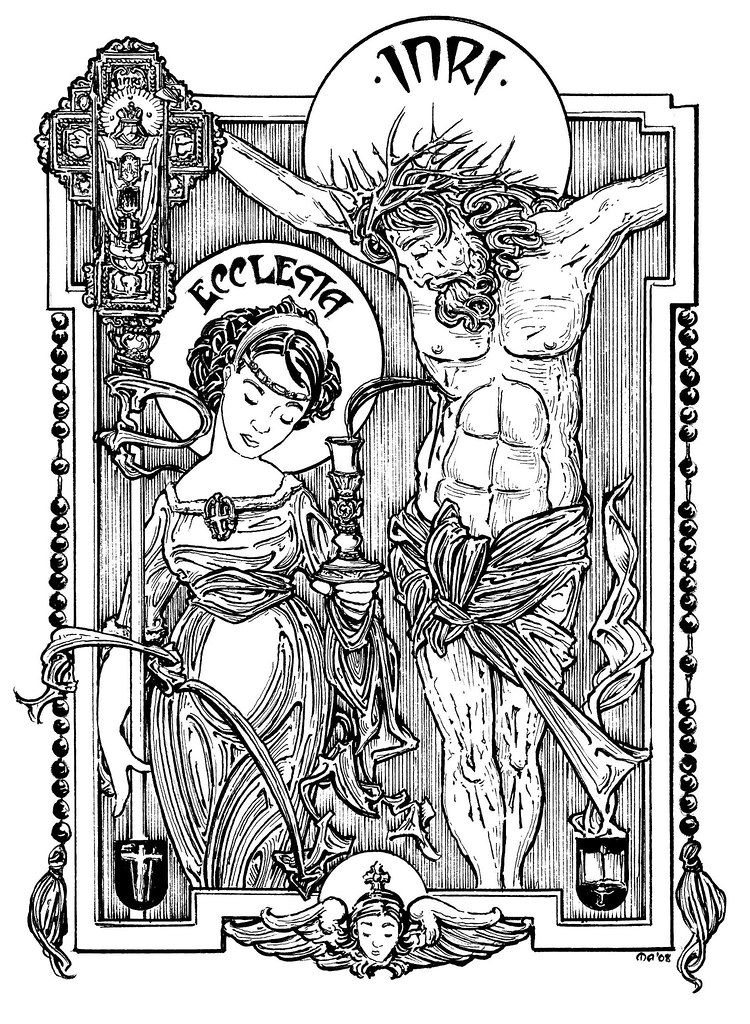
A Mystical Crucifixion with Our Mother the Church catching the Precious Blood of Our Lord. (Ornaments for a Nuptual Missal, II). January 2008. Artist's Collection.
Friday, July 17
The Gilbert Scotts are Not a Rock Band
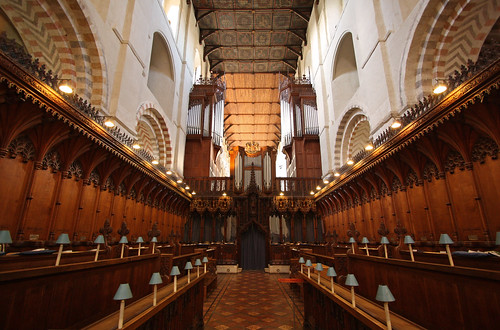
Continuing our parade of Gothic -RevivalArchitects-Nobody-Has-Heard-of-Before-But-Should, I submit for your approval the Gilbert Scotts--Sir George Gilbert Scott (1811-1878), his sons George Gilbert Scott Junior (1839-1897; unfortunately the poor, overworked man went, as the writers of 30 Rock might put it, "old-school bananas" towards the end of his life) and John Oldrid Scott (1841-1913), and grandsons Sir Giles Gilbert Scott (1880-1960) Adrian Gilbert Scott (1882-1963), and Charles Marriott Oldrid Scott (1880-1952), and great-grandson, Richard Gilbert Scott.
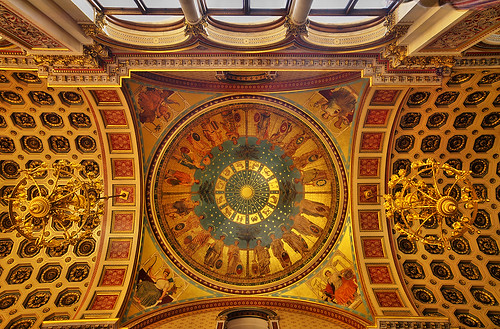
Sir Giles is famous for, after having only designed and built something only as large as a pipe-rack, winning the commission to do Liverpool Anglican Cathedral, one of the greatest and last flowerings of the Gothic Revival, and which he spent most of the rest of his life designing, on-and-off. He also came up with the vaguely Soaneian red telephone box that has become a veritable icon of Britishness, and did the designs for my favorite power-station (I have one, yes), the looming funneled pile called Battersea. With the possible exception of the Bachs and the Peales (Charles Wilson, Rembrandt, and co.), I can think of few better genetic arguments that some professional talents might well be hereditary.
Some examples of their work, from the excellent Flickr group Gilbert Scott.
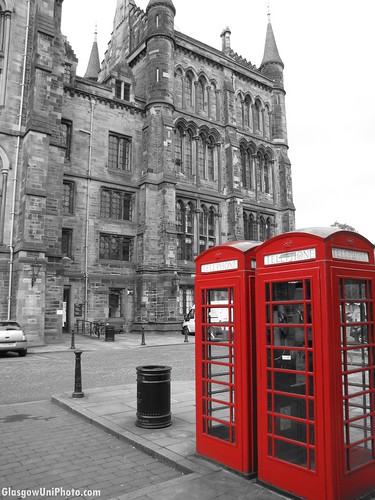

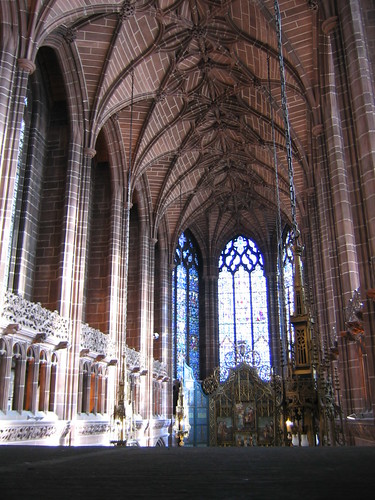



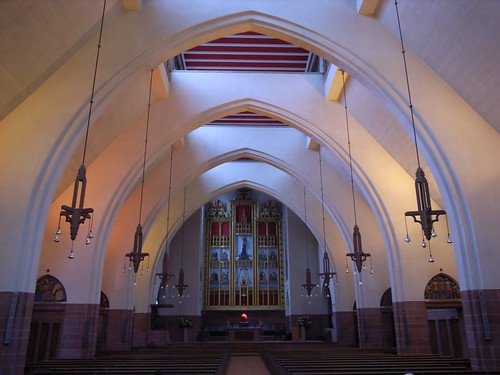
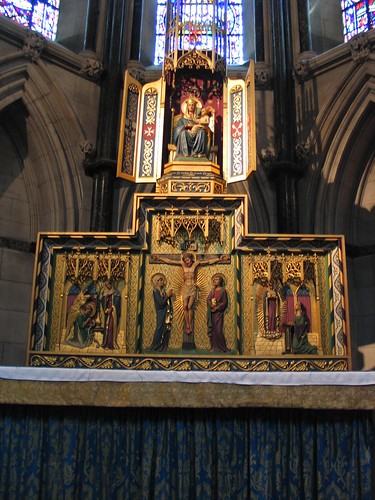
Thursday, July 16
St. Joseph's, Wilmette - Interior Photos
++1.jpg)
D Mac over at Creative Minority Report was kind enough to send some stunning interior photos of this beautiful church, which I posted on some weeks back. It has one of my favorite nave-and-side-aisle arrangements, and is also distinguished by its distinctive stained glass. "It's so...purple," as a friend who visited the church with me commented, succinctly.
Last time I wrote about it, Daniel Mitsui was kind enough to point out the church's rather surprising backstory, which involves Nazi spies and a real-estate dabbling priest who also doubled as the mayor of Wilmette for three terms in office. Really:
At this same time, Hitler began his alarming rise in Germany. Cardinal Mundelein was of German ancestry and he wanted people to know he held Hitler in utter contempt In a speech in New York, Cardinal Mundelein compared Hitler, who fancied himself an artist, to a house painter or wallpaper hanger and not a very good one at that. Hitler was ridiculed in the international press after the speech. The story is told that Hitler vowed to get even with Cardinal Mundelein and sent agents to Chicago to see if they could uncover some scandal. The only irregularity they discovered was the will of Fr. Netstraeter which had never been executed. Supposedly, Hitler forced the relatives of Fr. Netstraeter who still lived in Germany to sue the Archdiocese in order to embarrass Cardinal Mundelein. Even the Vatican heard of the suit. Fortunately, the case was thrown out of court. Still, the Vatican told Cardinal Mundelein: "build the church." And so on the eve of World War II, the magnificent Church of St. Joseph was built and no expense was spared. It was dedicated by Cardinal Mundelein in late September of 1939. It was to be his last public appearance. The Cardinal died suddenly just a few days after the dedication.(Source).Anyway, enjoy the photos. More stunning shots in this vein can be seen in the book Heavenly City: The Architectural Heritage of Catholic Chicago, which is a fun read and even more fun to look through.
++4.jpg)
++3.jpg)
++2.jpg)
+5.jpg)
Wednesday, July 15
Gothic Revival Survival
Sir Walter Tapper


And here is an image of his church of the Ascension at Malvern (1901), his first solo effort, a subtly perfect combination of detail, massing and really superb coloration. More traditional architects ought to use stucco; it solves the problem of budget-stripped blank walls so neatly. The mellow golden stone trim is also magnificent.

More photos of this man's work can be found here, at Sir Walter Tapper and his Churches. (Isn't the internet wonderful?)
Tuesday, July 14
Why Matt Should Not Watch TV, Pars XXIV
A Lesser-Known Pre-Raphaelite

Edward Reginald Frampton, 1872-1923: "Frampton's highly decorative, exaggerated style is typical of the late phase of Pre-Raphaelitism, which extended well into the twentieth century." --The Pre-Raphaelites, Christopher Wood, 1981. Take his Annunciation: striking melted-lifesaver colors that put me in mind of the early Florentines, somewhat curious faces, though there is a touch of Burne-Jones to the intelligent blue gaze of the Virgin's face. The Virgin attentive, servantlike, yet seated in an almost thronelike pose. The angel gracious, though somewhat contorted. Intriguing, worthy of further study, though not quite a total success.
A few other examples of this later exponent of the movement--luminous, open, and occasionally slightly peculiar, more due to technical shortcomings than anything unwholesome can be seen here and also here. Some follow below. A number are quite strong, though the final image, of St. Cecilia (based on a Tennyson poem rather than the saint's actual legend), borders on the twee, but there's some good raw material in there worth extracting:



Monday, July 13
Another Undeservedly Neglected Interwar Church
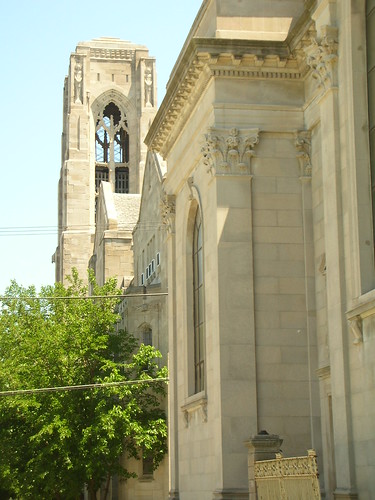
These are some photos I took on Corpus Christi weekend in Chicago, of the handsome Deco-influenced Gothic revival Presbyterian Church on the same block in Woodlawn Park, Chicago, as the Institute of Christ the King's new headquarters at the former parish church of St. Gelasius, whose flank can be glimpsed above. It is a surprising contrast to seen these two, very different grey stone churches back-to-back, squeezed into a relatively narrow city block.

It is a rather striking design, perhaps not quite as majestic as its Gothic fellows a few blocks north on the U Chicago campus, but still undeservedly forgotten and with some rather clever details and very good massing after the manner of Goodhue. The flank, with its curvilinear buttresses, as well as the tower, are probably the best parts. The front is less dynamic, but still well within the standards of the time, and perhaps with a bit of a clean, the whole complex could be quite charming.
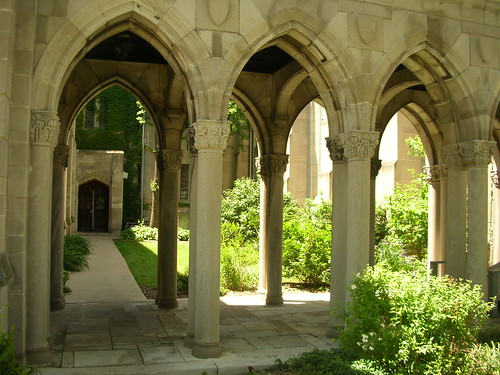

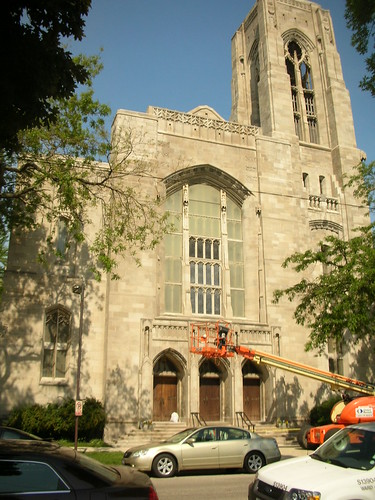
Fortunately, the Institute's presence, and a number of other local improvements, have done much to improve the area since my last visit in 2006. It will be interesting to see how the neighborhood develops in the near future.
Sunday, July 12
Matt Re-Discovers the Midwest
A Pleasant Country Church
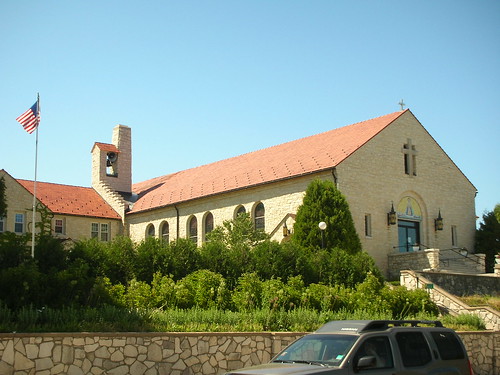
I was up at Fish Creek in Door County along Lake Michigan this Fourth of July, my parents having come up for the occasion, and one of our drives round the peninsula led me to this handsome little church, St. Mary of the Lake, once a parish in its own right and now a chapel of ease of sorts for the new, consolidated peninsular parish of Stella Maris. It has the look of the inter-war year, when Gothic revival had become canonical, if not quite conventionalized. It is a model of balanced economy, with simple massing and detailing carefully considered, just enough but not too little. In particular, the combination bell-cote/chimney is quite fine. This specific detail I have always been fond of, and I believe it originated in a Ralph Adams Cram church in Americus, Georgia, where it was combined with a buttress.

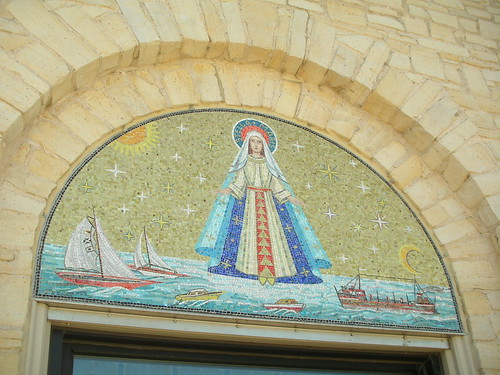
The mosaic, with its hieratic Virgin and modern ships on stylized waves, is also a welcome touch of color, though perhaps if the lunette were larger and the design slightly bolder, it would read better at a distance.
Friday, July 10
New Illustration: S. Michael
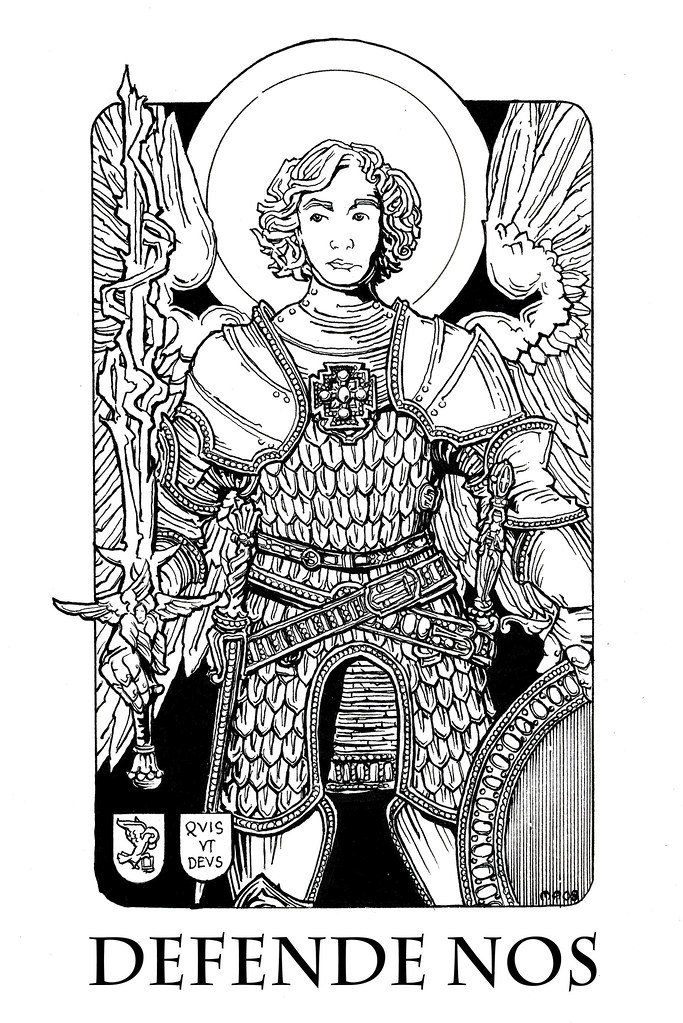
Matthew Alderman. S. Michael the Archangel. Ink on Vellum. March 2009. Private Collection, California.
Thursday, July 9
From the Author's Notebook

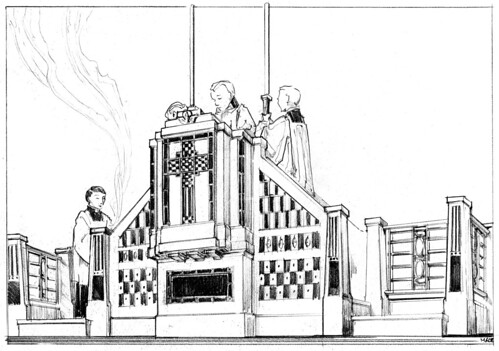
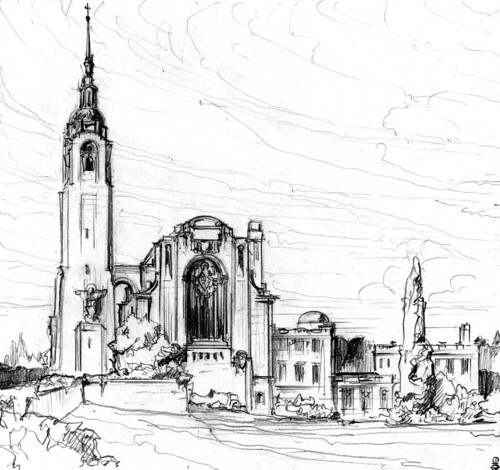
And here are some sketches for a hypothetical cathedral I imagined for the Steubenville diocese, dedicated to the Triumph of the Cross. The larger of the two has been featured here before, but the smaller study is new.

